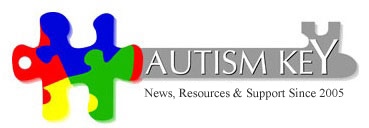A Call to Action: Threats to the Disabled During COVID-19
We must guarantee the equal rights of people with disabilities to access healthcare and lifesaving procedures during the pandemic.
– UN Secretary-General António Guterres at the launch of Policy Brief on Persons with Disabilities and COVID-19 (May 6, 2020)
While the UN Secretary-General issued a ringing endorsement of the civil rights of people with disabilities during the pandemic, the reality of what is happening across the United States is a far cry from the ideal. As hospitals are stretched thin on beds and supplies, criteria for who does and doesn’t get life saving treatment falls along familiar and disturbing lines, especially in the nation’s virus hotspots.
Guidelines in Texas and Arizona let doctors base treatment decisions on factors like a patient’s quality of life if they survive or the odds they’ll live at least five years. Concerned with liability, doctors and hospitals are eager to inoculate themselves from their difficult decisions. “Rationing is already here,” a group of 10 physicians wrote in late May in the New England Journal of Medicine. These ten doctors believe that life saving treatment should be reserved for the young, “for those who are sick but who could recover with treatment.”
Leaders of the American Medical Association and the American College of Physicians disagree, asserting that the pandemic has laid bare long-time inequities in the system. These groups reject any triage measures that discriminate against entire segments of society such the disabled as “not ethically defensible.”
There are no unifying principles and policies, so advocates are in trenches fighting it out at the state level.
Nationally, there is currently an issue where we can all lend a hand. The next upcoming Senate bill addressing COVID-19 relief does not currently include emergency funding for home and community based services (HCBS). This represents a clear and present danger for members of the community that rely upon these services to live out their daily lives safely, in their own homes. If this funding lapses, many will be forced into institutions, which is tragic in its own right, but dangerous because COVID-19 is raging through group homes and other institutions.
No one within the government was tracking how many people with disabilities have contracted or died from coronavirus while living in group settings. The Autistic Self Advocacy Network (ASAN) took it upon themselves to create an online tool compiling data towards this end. Drawing on data from local governments and media reports they estimate that there have been 18,000 deaths and 90,000 COVID-19 infections of disabled people living in nursing homes, institutions for the developmentally disabled, psychiatric hospitals, group homes and other such facilities. ASAN is attempting to limit the number to residents, but some health care worker infections and fatalities are included as well.
The Autistic Self Advocacy Network’s tracker notes that some states are reporting zero cases or deaths, but that likely just means there is no data available and other states are under counting, so the situation is even worse than reported. The horrible truth is that people with disabilities are contracting and dying from COVID-19 at much higher rates than those without disabilities.
After a hue and cry over COVID-19 sweeping through nursing homes, the Trump administration instituted rules requiring transparency and direct reporting of COVID-19 cases to the Centers for Disease Control and Prevention. Disabilities advocates are demanding that the same measures be taken for congregate living situations for the disabled. So far, that has not come to pass.
If you’d like to pitch in and make your voice heard ASAN has a page to assist you in contacting your representatives.
Even though the news is grim, there are many people fighting the good fight to level the playing field and look out for those with disabilities. In times of hardship character is not made, but revealed.
# # #

